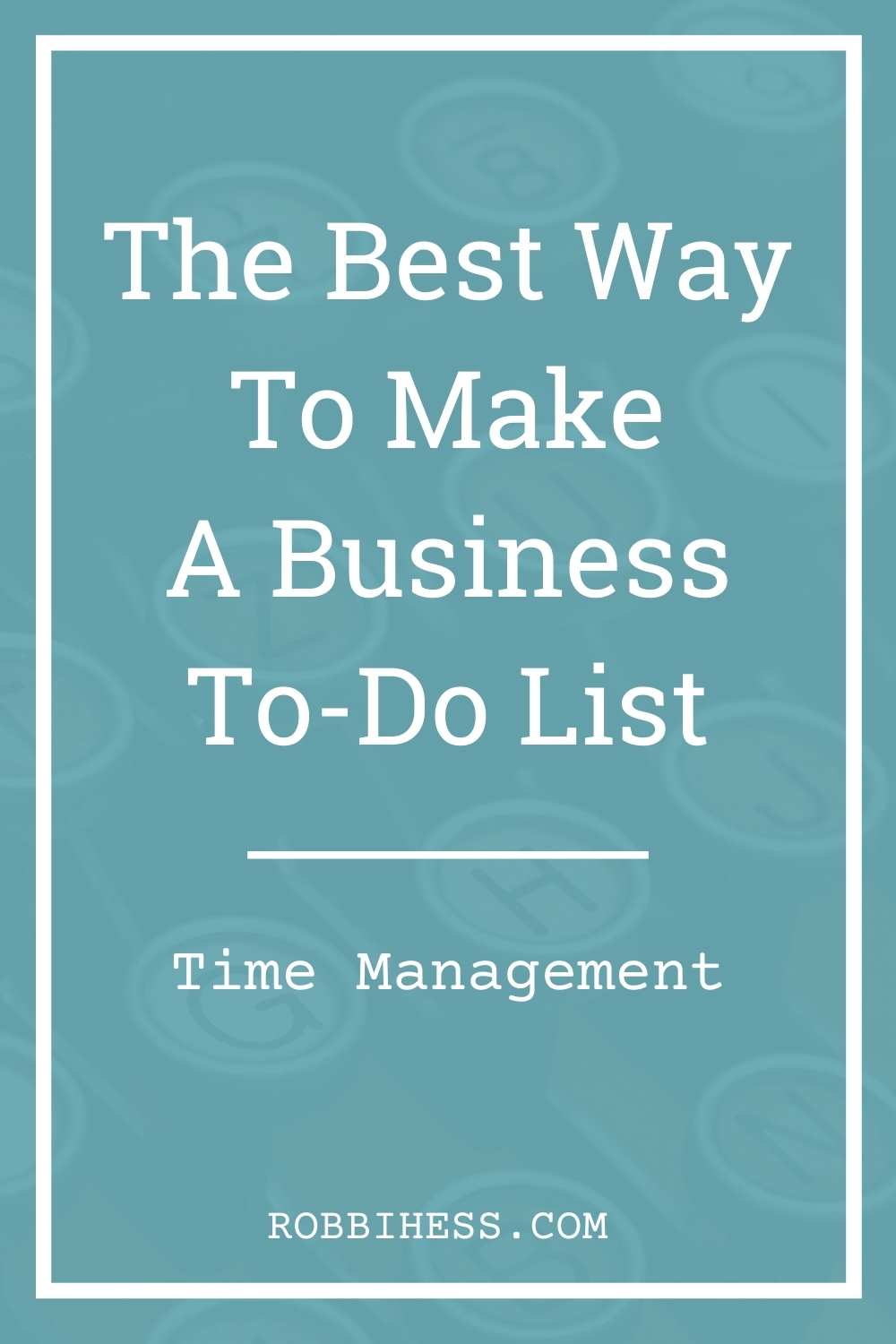The Best Way to Make a Business To-Do List

I am a list-maker. Even before breast cancer “stole” my power of recall and portions of my memory I made lists. My lists included:
- Books I’d read
- Books I want to read
- Groceries I need to buy
- Work I need to complete for clients
- Content I need to create for own business
- And more
My lists lived on sticky notes, my smart phone note app, a scrap of paper and everywhere in between. There were days when I would be rummaging around in my purse and come across crumpled up lists I had completed – and a few I’d never finished.
What I have found is that other than making sure I don’t forget to buy bread or eggs my lists weren’t the most effective (or efficient) means of getting shit done.
How can you make an effective list?
For your list(s) to be effective, they need to have a strategy behind them. In other words, list with intention. Discipline yourself to be an effective and efficient list maker and to put the lists in a place that’s easy to find and to search.
I love Evernote. It gives me a repository for all my lists (personal and professional). It lets me tag them so I can easily find them AND Evernote also is a history of my lists and of what I want to do AND what I have done.
Here are strategies for making a list (or if you already make lists – to make a better list!)
Based on years of list-making, these are the lists I have decided are my favorites
To-do list.
My daily checklist keeps me on track. My checklist assures I don’t miss any client deadlines. Without a checklist and a running list, I would fear I forgot a task or missed a deadline. Making a daily list and writing a list for the following day when I leave the office at the end of the day helps me sleep at night.
My to-do lists and daily checklists are realistic and doable. Crossing items off my daily checklist feeds my feeling of accomplishment and I can cross items off on my Evernote or on my paper planner.
Decide whether you want paper or electronic or a combination. I have a paper daytimer that I use daily. It is my first glance at what I am doing that day. I put my daily meetings and meeting times as well as a brief list of to-dos.
For example: My paper calendar list might read: Write two blog posts for my site. Chances are, my notes or lists of ideas I’ve gathered for those blog posts reside in my Evernote.
Client meeting lists.
My daily client meetings are in my Google calendar as well because I like the notifications I receive as a reminder.
Running lists.
No, this isn’t a list that will have me tracking the miles I’ve run – I wish! This is a list of those items that I do daily. I don’t want to waste time writing down the same items every day – that is not an effective or efficient use of my time. Instead, in my Google calendar I will make note of all those items I do daily. I write it one, attach a random time, then I can drag it to the next day without re-typing. On my paper planner I will make a note of: Running client list as a reminder of those recurring tasks.
Marketing task list.
I know I much prefer to live my life on a even keel and that means I don’t want to worry about having too much client work and burning out NOR do I want to have too little work and worry that I will be living on ramen. I make certain I market my business daily. I set aside thirty minutes a day to work on one aspect of my marketing. In my list I note: Social media follows, social media comments, blog post writing, podcast marketing, etc. This way I am continually marketing my business.
Not-to-do list.
As a solopreneur it’s easy to say “yes” to every project. I have done that and I have regretted it. Why was I going outside of my area of expertise? Because I was afraid of the ebb and flow of income. That is until I realized that my own content is as crucial as the content I create for my clients.
A not-to-do list is as important for a solopreneur as is a to-do list. Remember you cannot be everything to everyone. Know what you will do, what you want to do and what you don’t want to do and with whom you don’t want to work then be prepared to say “no” to items that simply don’t fit your business plan or that are on your not-to-do list.
If you find it hard to say no – and because I am a bit of a people-pleaser, I do – I may not give an outright no. I may say, “I appreciate the offer, can I think about it?”
Then after I’ve given myself that grace, I will use a – wait for it – list to determine if it’s a good fit, is something I want to do, is something that will forward my own business endeavors or is something that sounds fun. After I’ve run the pros and cons I can give a yes or a no.
Embrace your effectivity
When you’re a solopreneur, author or entrepreneur of any stripe, effectiveness and efficiency matter. You need to work “smarter, not harder” to make efficient use of all the time you work on your business.
Entrepreneurs need to find their way around a list, use it and track how efficient – or how non-efficient – they are in the course of their daily office hours. If you find you’re not getting through your lists you need to examine whether you’re putting too many items on it, whether you’re being distracted or whether there are items you simply need more help with or assistance on.
Do you make lists? Do you love them or hate them? Do you have organized lists or a jumble of paper scraps in the bottom of your purse or briefcase?
Do you want to know how to make effective lists AND/OR how to time-block your day for maximum efficiency? Contact me OR sign up for my occasionally-sent newsletter that is filled with tips on content creation, effective entrepreneurial behaviors and more.
